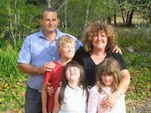With the inside surfaces sealed, light temporary frames, about 20mm thicker than the sashes, were lightly fitted into the four corner openings. The frame was then flipped over and rested on these frames, which protected the inside finish.
The entabulature, fixed to the outside face of the transom rail was tackled first. The "Cyma reversa" moulding, being the most difficult section to produce, was machined from some Lebanese cedar using multiple bits and a number of passes over the router table. Once it was ready, fine tuning of the dimensions for the other components could be completed. The frieze pattern, cut out from 6mm Hoop pine marine ply, was varied slightly in the horizontal plane in order to match on the mitres. The "Cap" was machined to a tapered profile and was mitred over all the projections. This had the top surface sloping outwards to prevent the pooling of any moisture.
The untrimmed pieces for the two ends have been left loose at this stage. They will be trimmed to fit neatly against the stone reveals, once the frame is installed.
Making the proverbial "Silk purse from a sows ear".applied to the making of the turned columns. From my stash of "accumulated" timber, I grabbed the most accessible pieces that were of sufficient dimensions and durability, some old 5 inch square, Red gum and Jarrah verandah posts, complete with cracks, charred faces and embedded nails. The nails, some of which had been previously broken off and were hard to detect, obviously needed to be removed, hence the chiseled holes seen in the photo. Only one was missed and ultimately discovered by the roughing gouge when on the lathe!. All the pieces had deep cracks along one face, however as the columns are planed flat at the back, to fit against the mullions, these could be hidden there.
The small shoulders on the ends were cut on the bandsaw for mounting in the lathe chuck, once roughed down, (at a very low speed), a truer rounded shoulder was shaped alongside and the square section cut off. With the blank remounted, a 1 inch diameter hole was drilled in the opposite end to accommodate the "live centre", this hole would be used for dowelling the finished pieces together. The blanks were then returned, down to about 105mm diameter and roughly shaped, as seen in the above photo. The lathe speed was then cranked up for pieces to be finished off and sanded.
The next step was the "fluting" to the lower half of the columns, this I
was able to do this on my lathe. I attached my little trimming router
to a flat base which would slide on a fabricated a table, bolted onto
the lathe bed, all adjusted to align with the horizontal centre line of
the work. After much thought on how I could make up an indexing head for
the purpose, I found that the shaft lock on the head would serve,
having 12 separate positions. Excess slop in the spindle with this
method was overcome by filing down a screwdriver shaft to as tight a fit
in the locking hole as possible and then clamping it down firmly for
each flute.
More than happy with the results, the first one is completed and the next is waiting for it's turn in the lathe. I opted to turn the bases separately, as the total length of the columns was too long for my lathe. The pieces, as they are, only just fitted between the centres.
I put much thought into how to decorate the upper section, finding the originals I was emulating, a little plain in this area. I chose to continue the same style of column through, topped off with Doric capitals, as seen in the above picture of the dry fitup. These would be a little less heavy than the Corinthian capitals, that would be topping off the lower columns, and the subject of my next post.
Not having any suitable timber of sufficient size to turn the larger diameter, I laminated some pieces of Lebanese cedar for the purpose. Using this instead of hardwood was not only much easier to turn, especially given the large volume of wood to be removed, it was also less vicious on the tools.
Thursday, May 2, 2013
73, Front Door, part 4. Bits on the front!.
Subscribe to:
Post Comments (Atom)








No comments:
Post a Comment